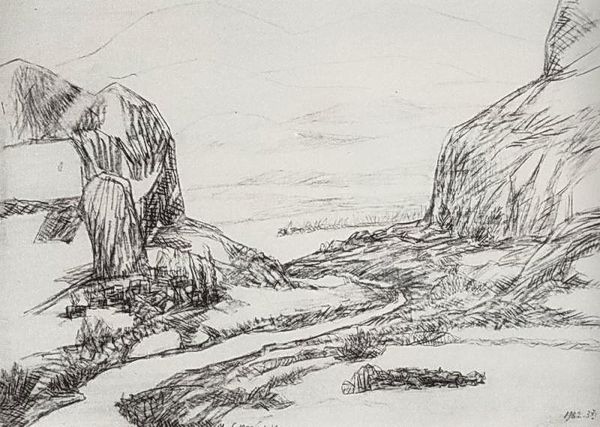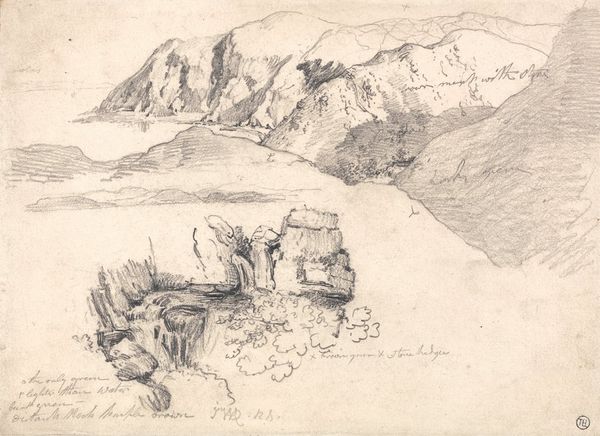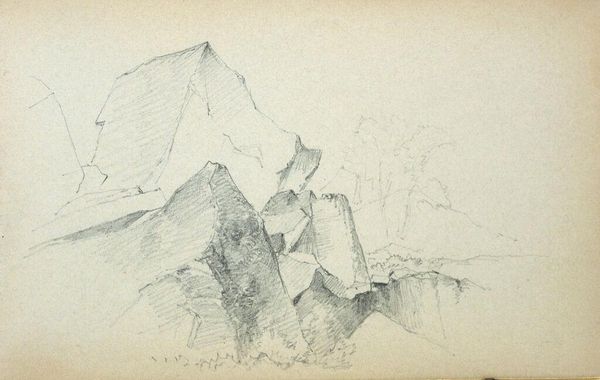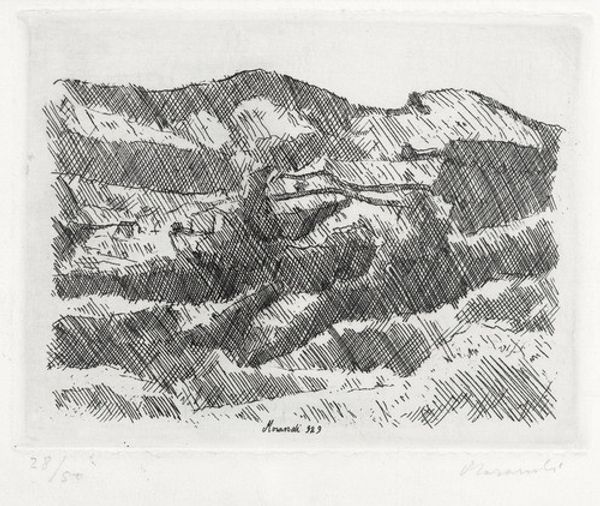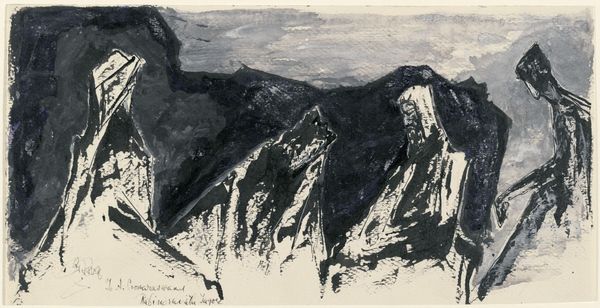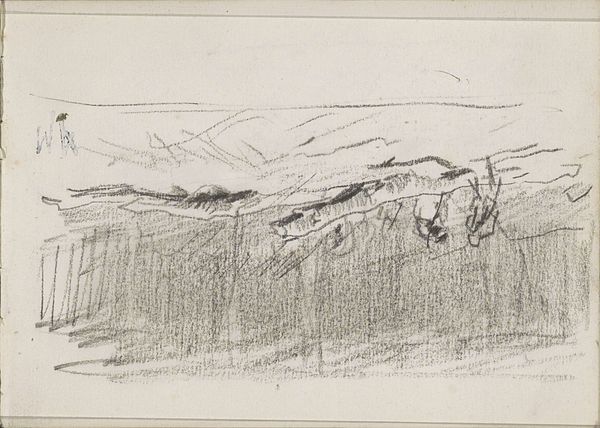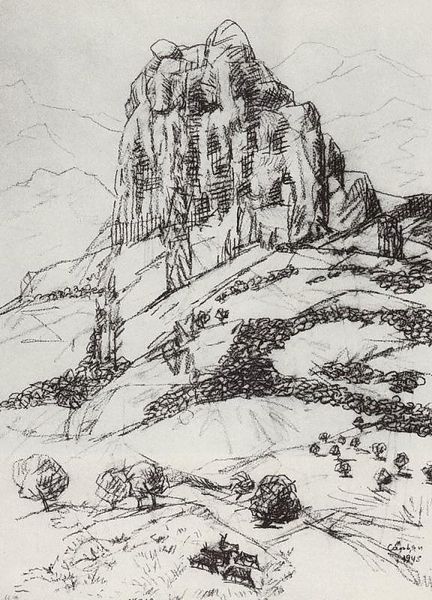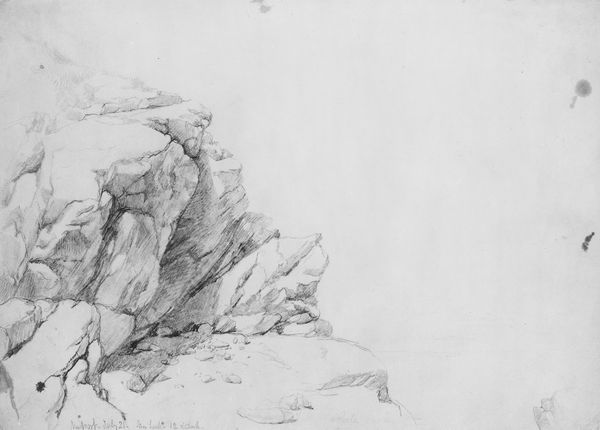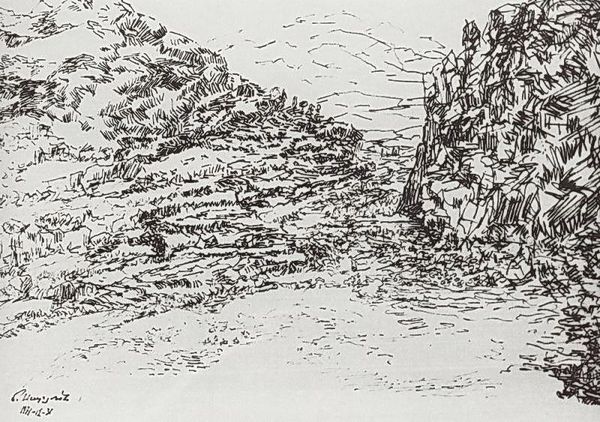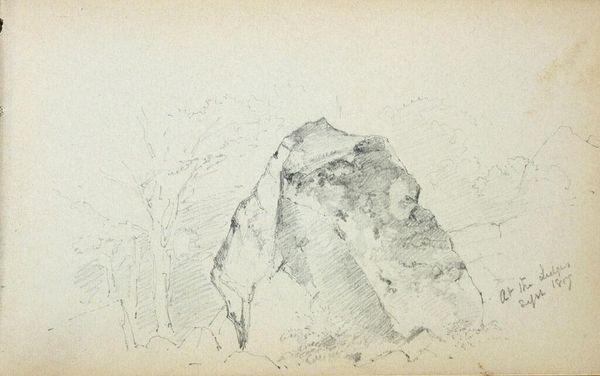
Copyright: Martiros Sarian,Fair Use
Editor: Here we have "Gorge Pambak," a 1929 pencil drawing by Martiros Sarian. It's a fairly simple sketch, very linear. The heavy shading creates a striking contrast; it feels very imposing and monumental. What do you see in this piece? Curator: This sketch gives us insight into Sarian's evolving relationship with the Armenian landscape during a tumultuous period. Sarian had repatriated to Armenia just a few years before this work was made, after years abroad. To what extent do you think that act of return shaped his artistic vision? Editor: It must have had a huge impact! Being in his homeland again likely instilled a deep appreciation, perhaps influencing him to document its landscape so meticulously. Curator: Exactly. The “Gorge Pambak,” therefore, represents more than just scenery; it reflects Sarian's attempt to construct a national identity through the representation of the local environment. He wasn't merely sketching; he was actively participating in defining what Armenia *looked* like to itself and the world. Notice the high vantage point and imposing composition. How does this impact our reading? Editor: Seeing it that way, it gives the scene a monumental feel, almost like a heroic landscape. Curator: Precisely. These early depictions laid groundwork for how the region and the Armenian identity were visualized. It makes you think about who gets to define a place and its people through art, doesn't it? Editor: It definitely does! I didn't think of it as nation-building when I first looked at it, but now it seems so obvious. Thanks! Curator: My pleasure. Examining the political undercurrents is essential to comprehending Sarian’s contribution and legacy, and reminds us that art is often intertwined with national narrative.
Comments
No comments
Be the first to comment and join the conversation on the ultimate creative platform.
